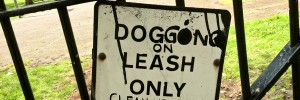Allow Grade II listed properties allowed to have slim double glazing
Allow Grade II listed properties should be allowed to have slim double glazing. There are around 350,0000 grade II listed properties in England. Double glazing allows buildings to be much more energy efficient, and are one of the most cost effective energy saving inverstments and homeowner can make. Conservation officers in local authorities are completely against allowing double glazing in Grade II listed properties. I would completely agree with them 15 years ago when double glazing was air filled wide with large visabel seals around the glazing. Glazing manufacturers now have denser gases allowing building regulation comlpient windows to be much slimer and the methods of construction mean the main glazing seal is hidden within the frame. There will however be some instances where adding double glazied wood or metal windows will not be allowed as fitting heavier windows would destroy the "fabric of he building", but in most cases this would be an easy change to make. All this change requires is the goverment telling council conservation officers that slim well designed double glazing (not-uPVC) is allowed.
Why does this matter?
Double glazing is one of the most cost effective energy saving methods a homeowner can invest in.
Suggested by Patricia Haywood and tagged double glazing, listed buildings. 46 Comments. Image source
















I am currently refurbishing a Grade II listed house in Mendip with partially rotten front casement windows which have been repaired many times over the years and are now past their working life. However the conservation officer insists on repairs being undertaken yet again instead of slimlight double glazing. My joiner does not know where to start repairing them as he has little to work on. The regs need to be changed urgently and common sense applied!
If you need help I can oblige.
We are installers and suppliers of double Glazed units that Comply with both Regs and Conservation Requirements.Conservation need to be show the details and in the end comply..
We are installing windows throught the South of England and are busy for the next 3 months.
On Listed Buildings,Forward a spec. for you windows and I’ll send you a Quotation in return.Either Hard or Soft wood.All factory Painted and Glazed
I am an owner of a grade ii listed money pit.
Our 6 over 6 georgian sash windows are due for replacement. We have had various restoration companies and conservation officer around to look at them. They were indeed replaced in 1975, along with the house being completely re rendered in portland cement. There is no crown glass, spirral instead of lead weights, bars of 32mm i.e. nothing original at all.
We have asked for permission to have double glazed, timber slimline replacements, but, once again double glazing appears to be the most hated invention as far as conservation officers are concerned.
The temptation just to put them in and say “to hell” with conservation officer is massive.
What are the remits of these officers, can we be fined or forced to remove these sensible undistinguishable from single glazed windows?
Is there anyone out there who has consistently been able to get permission to install the latest double glazed slimline systems?
If so please let me know, my money is waiting!!!!!
Brilliant idea – is it likely ever to come off though? I am currently in dispute with the local borough council on just this issue and getting nowhere with them.
PRIVATE RESIDENTIAL GRADE II PROPERTIES NEED DOWNGRADING
After 25 years of living in a Grade II listed building our experience has been that the definition and application of Grade II listing of private residential buildings is: unfair and contravenes human rights; unnecessarily restricting and expensive; subjective and opinionated; arbitrary and inconsistent. Its outcome is environmentally unfriendly, criminalising and counter-productive. THIS HAS TO BE CHANGED!
The general consensus in the UK is that historic buildings should be preserved by means of a listing process. However, buildings are listed for a variety of different reasons, which necessitate different approaches rather than the single, most rigorous approach that currently prevails. In March 2010, there were approximately 374,000 list entries of which (92%) were Grade II (buildings of special interest), (5.5%) were Grade II* (particularly important buildings of more than special interest) and (2.5%) were Grade I (buildings of exceptional interest). Most residential Grade II buildings are not of particular historical value. Many were altered to a considerable extent in the last century. A very large number were then listed in the 70’s and 80’s without any thought for owners living in them.
There was formerly a non-statutory Grade III for buildings which, whilst not qualifying for the statutory list, were nevertheless considered to be of ‘some significance’; this was abolished in 1970
THE PROPOSITION
1) Downgrade all Grade II buildings that are used primarily as private dwellings to a reinstated and redefined Grade III (some significance), following consultation on human rights, environmental and legal issues, etc. The aim of this would be to ensure that Private owners of residential, currently grade III listed buildings have the same right to optimise the use of their homes, as any other home owner.
2) The only listed buildings restrictions that might reasonably be placed upon a Grade III listed building would be for alterations to the external appearance seen by the public, or the fabric of the building itself, thus protecting it from reconstruction or demolition. Limited private residential listed building control could still be obtained through this downgrading from ‘special interest’ to ‘some significance’. This would entail appropriate redefinition, following consultation on human rights, environmental and legal issues, etc.
3) Grade III listed building consent would NOT be needed for anything within the dwelling, interior, fixtures, fittings, nor for objects within the curtilage of the building, the enclosed area occupied by the building, grounds, and outbuildings, i.e. modern extensions, sheds, greenhouses, walls, etc.
4) The remaining minority of non-residential Grade II buildings would be subject to the same listed building consent regulations that currently apply. Concerned conservationists would have to make a case for upgrading any Grade III (some significance) listed properties they considered to be of special interest.
5) The provision of grants and VAT exemption both for maintenance and development would have to be available to the owners, where necessary, before any listed building control restrictions and obligations could be imposed on Grade III properties (see 7, 8 & 9 below).
Private owners of residential GRADE II listed buildings already expect to have to pay their own costs of maintenance and alterations of external frontages and fabric. Grants at that grade are rare and therefore not assumed. What they do NOT expect to pay for is the additional cost of work demanded by Local Authority Historic Buildings Officers, including the extra VAT.
6) TREAT PEOPLE AS RESPONSIBLE ADULTS by decriminalising the law relating to Grade III listed buildings (some significance), thus reducing the power of listed building officers and causing less associated bureaucracy. Consider using contractual law where owners, as customers, agree to conform to negotiated maintenance and development requirements and costs, in return for Local Authorities, as suppliers, agreeing to advise (impartially and objectively) and administer any funding and VAT exemption.
7) Historic building specialists, appointed by the Local Authorities/English Heritage, would provide authentic and impartial advice (like that given on TV restoration programmes and including the appropriate use of modern materials, or not).
8) Consultation and discussion to be freely available in cases where maintenance involves significant alterations or development that needs to be sympathetic to the external appearance of the original building.
9) Obtain a negotiated agreement between both parties, in which specific materials and work by craftsmen are defined and affordable, (this could be supported by grants where necessary; it would be up to those demanding any enhancements beyond that agreement to pay for them).
10) Make energy efficiency targets apply to listed buildings – help owners to obtain energy performance certificates. At the moment they are a hindrance!
11) Provide Opportunities for Local Government savings. Nearly 400,000 properties in Britain could be downgraded to Grade III allowing appreciable savings for local authorities on historic building planning officers, technical input, personnel time, administration, defending appeals, etc.
OUR SITUATION is like tens of thousands of others
We bought our thatched cottage in October 1980 and it continues to be a lovely family home (NOT A MUSEUM) in a pleasant village environment. The only particular feature of the building is its thatch. Our cottage was not listed when we bought it and we had no idea that it was likely to be so. On 16th September 1986, we received notification of listing, the decision having been made by English Heritage on 11th April 1986. We have never been told why we were listed, nor asked whether we wanted to be listed, what the benefits were, what our responsibilities were, what our rights were, e.g. to appeal and obtain delisting, nor our obligations, e.g. what we can and cannot do to the building and its environment. We have never been given any information about the historical importance or significant architectural features of the building; no one in authority has ever expressed any interest.
Most residential Grade II listed buildings are owned by people like us, of modest means – ordinary people, pensioners even, living in houses of ‘some significance’ but not of ‘special interest’ – a large proportion of whom, like us, bought their property before it was listed. Listing causes us to be considered in the same way as wealthy people or institutions who can perhaps more easily afford the privilege and responsibility of owning a listed building. For people like us it’s no longer a privilege, it’s a liability!
Reading the frustrations and disillusionment of people owning Grade II dwellings on ‘GOV YOU’ made me realise that we are far from alone in the way we feel about this situation. This has inspired me to contribute my views and experiences. I really do hope that someone in authority, i.e. Government, who really cares, will listen and act swiftly on our behalf to change the law.
HUMAN RIGHTS LEGISLATION
It is against the law for a public organisation (like a government department, council or the police) to ignore human rights; for example:
• You have the right to enjoy the things you own
• Public organisations cannot interfere with things you own or the way you use them
• You have the right to respect for your private and family life, your home
• You have the right to be treated fairly – like everyone else
All UK law should fit with the Human Rights Convention. If not, Parliament must decide what to do
THE REQUIREMENT FOR LISTED BUILDING CONSENT
Currently, Listed Building Consent is required for ALL GRADES of listed buildings before any of the following works being undertaken:
• Alterations (other than a minor ‘like for like’ repair) both inside and out (including any structure within the curtilage, such as walls, outbuildings even if not fixed to the building) which affect the character of a Listed Building.
o Painting over brickwork
o Removing external surfaces
o Adding dormer windows or roof lights
o Changing roofing material
o Putting up aerials or satellite dishes
o Removing internal walls
o Altering fireplaces, panelling or staircases
• Extensions, Double glazing panels, Heat pumps, etc.
• Demolitions and Partial Demolitions
(Planning Permission and/or Building Regulation Approval may be needed for any of these as well)
NOTE: Grade II listing applies not just to the exterior fabric of the building itself, but also to the interior, fixtures, fittings, and objects within the curtilage of the building, even if they are not fixed, i.e. modern extensions, sheds, greenhouses, summer houses, etc.
Currently, by making even minor alterations to a listed property, no matter what Grade, without permission, THE OWNER is committing, not a civil but a CRIMINAL offence.
New owners cannot be prosecuted for someone else’s shoddy work, or failure to acquire Listed Building Consent. However, they need to avoid being forced into rectifying the previous owner’s ‘mistakes’ at their own expense; this may necessitate employing a solicitor &/or surveyor.
Astonishingly, by law, Local planning authorities can gain entry to listed buildings by force where the owner has refused permission.
Another issue is the VAT anomaly: ‘sympathetic’ alterations to listed buildings that have received Listed Building Consent are VAT exempt. Maintenance however, i.e. real conservation, replacing ‘like with like’ using expensive authentic materials and crafts, requires full VAT payment.
And if you think that there is money to be made out of all that, think again! Although listing legislation is currently applied as ‘one size fits all grades’, any sort of grant for work on a Grade II listed building would be extremely unlikely. Money available from English Heritage will be for Grade I and Grade II* listed buildings only.
ALL OF THE ABOVE IS VERIFIABLE (people may say, yes but surely ‘they’ would never apply the extremes of the law? ‘They’ use it as a threat, and if not, why does the law exist?)
WHY PRIVATE DWELLINGS SHOULD BE TREATED DIFFERENTLY
Private dwellings need to be treated differently because they are family homes; people live in them. Access by the public is restricted to those who are invited in by the owners. External views of the property are the only way in which its significance can be viewed by the general public. The internal aspects and curtilages are of no consequence to the community. The community does not want its scarce resources to be used unnecessarily for costly maintenance or sympathetic alterations that only the owner can appreciate or benefit from directly.
Grades I and II* non-residential listed buildings are usually open to the public, they are likely to be of National Importance and their conservation and protection need to be paid for by the Nation or Local Community for their enjoyment (perhaps because no one else, apart from private or commercial benefactors, is prepared to provide the money)
You only have to watch TV programmes about restoration of old buildings to understand how debilitating owning a listed building can be. The liabilities have created a stigma that deters buyers and has inevitably reduced the market value of such buildings.
GRADE II LISTING INCLUDES STRUCTURES WITHIN THE CURTILAGE (see earlier)
Commonly, the listing statement, like ours, is only a description of the building without saying in specific terms why the building was listed, other than ‘of historical or architectural interest’.
CURTILAGES Local councils don’t just focus on the listed building itself (the reason it was listed), they insist on controlling garden buildings, sheds, sectional greenhouses, fruitages, summerhouses and fences even modern extensions.
A few years after listing had been imposed upon us, having obtained planning permission to alter a 1960’s flat roofed extension, we asked whether we could incorporate an additional window. We were told that this would be permissible, as long as we used a casement window! I was astounded by this, since all the existing windows in the extension were modern hinged types. More importantly, this extension is not part of the old building, which probably had no windows originally!
The internal aspects and curtilages of private dwellings are of no consequence to the community. Why should the tax payer pay for their repair and ‘sympathetic’ alteration? In that case, why should the law?
WHY INSIST ON LIKE FOR LIKE?
Strictly speaking, ‘like for like’ repairs do not require listed building consent; but there is no precise definition and so interpretations vary. Historic buildings planning officers apply personal interpretations of UK wide rules and these vary from council to council.
Local Authority Planners dealing with listed buildings are told to ensure that any work done on a listed building conforms to whatever building materials, standards and styles were evident at the time of listing. This attitude takes no account of what the original builders would have done today, faced with this new situation today. Buildings are living entities; they change with changing circumstances and improved technologies; some modern materials are lighter, more flexible, cheaper, easier to obtain, longer lasting, resistant to infestation, fire, corrosion, damp, they ‘breath’, insulate and, sometimes, look better.
OUR THATCHED ROOF – THE SITUATION IN WHICH WE FIND OURSELVES
There are three commonly used thatching materials: Water Reed (also known as Norfolk Reed), Combed Wheat Reed and Long Straw. Water Reed is the most durable thatching material and will last 60 to 70 years. Long Straw has the shortest life expectancy and will last from 20 to 30 years. Both types will require re-ridging at about 15 year intervals. Before farmers began using shorter strains of straw for combine harvesting, Norfolk Reed cost twice as much as Long Straw. (The general public would not be able to see the difference). Today, long straw has to be specially grown; hence material costs are much the same. Our Local Authority (South Cambs) insists on us re-thatching ‘like with like’. Unfortunately our property was thatched with Long Straw when it was listed in 1986! Ironically, a lot of long straw now has to be imported from Eastern Europe (hardly indigenous). We live 5 miles away from an East Anglian Fen where reed used to grow in abundance; it still does a little further away.
We are near the Suffolk border. Our thatcher has told us that had we lived 5 miles further East there would be no local authority objection to changing to Norfolk Reed. No matter which material, a complete re-roof would probably cost £35,000 and a re-ridge £2,500 at today’s prices. This means that, on a per annum basis, we are paying more than twice as much for re-roofing as we would if we were allowed to use Norfolk Reed. Those who wish to check the mathematics are welcome to do so. We are not wealthy people; in the past we have had to increase our mortgage in order to pay for the re-thatching! Such unnecessary costs are too big a burden for most owners of listed buildings.
TAXING PEOPLE ON OTHERS EXPENSIVE SOLUTIONS! THE RIDICULOUS VAT ANOMALY
Owners of GRADE II listed buildings are currently entitled to VAT relief on any expenditure that relates to material alterations to their properties – but anything they spend on maintenance, or on replacement of ‘like with like’, is still subject to VAT.
HIGHER INSURANCE PREMIUMS
Our insurance premiums are four times more expensive than normal. Part of this is due to the greater damage caused by thatch fires. However, that is further inflated by Grade II ‘like-for-like’ repair costs using the most expensive traditional methods and skilled craftsmen.
THE ANTI-ENVIRONMENTAL NATURE OF GRADE II LISTING OF PRIVATE DWELLINGS
Old buildings were not built to modern energy efficiency standards. Improving our environment by producing less pollution should have the highest priority in conserving our heritage. We are keen to make use of renewable energy, to reduce our carbon footprint, rather than remain dependent upon burning fossil fuels. The Energy Savings Trust has said that potential savings in the UK from using Heat Pumps, within well designed systems, are very good. We are in the throes of applying for permission to install such a system. Just to make life difficult, our application requires a full set of professional scale drawings and a Design, Access and Heritage statement. Ironically, this heritage statement requires us to say why the building was listed; it seems those who imposed the listing on us don’t know that either!
It is well known among Grade II listed home owners that improving the Energy Performance of such buildings will be challenging unless current restrictions on insulation, solar panels, double glazing, etc. are removed. As someone else put it, “we are all in this together”; or are we?
THE CRIMINALISING EFFECTS OF GRADE II LISTING ON HOMEOWNERSHIP
Carrying out unauthorised works to any listed building is currently a criminal offence and owners can be prosecuted. A planning authority can insist that all work undertaken without consent is reversed.
Is it any surprise that historic buildings planning officers have the reputation of behaving as though they have the right to bully people in their own homes?
I have little confidence in the impartiality of Planners in offering realistic and appropriate alternative solutions. I might prejudice my position if I asked for their advice which would adversely influence the course and cost of the action I might be obliged to take.
Also, I feel disinclined to seek advice from my Local Authority for fear of jeopardising (endangering) my situation because of alterations that I, or my predecessors, may have made to the building or its curtilage in the past, unwittingly perhaps.
Listed building consent can be applied for retrospectively but there is a risk that it will be rejected for reasons that might have been resolved at an early stage. An owner will have trouble selling a property where work has been undertaken without listed building consent.
There have been many times when we feel that our house is not our own!
THE COUNTER-PRODUCTIVE EFFECT OF LISTING
We live in hard economic times. Increasingly, people will not want to take on the restrictions and increased costs (including extra VAT) of living in these old houses and they will fall into disrepair. Downgrading to Grade III (some significance), as described, would reduce the burden for such home owners, whilst continuing to provide the encouragement and support for the buildings themselves.
In view of the relatively small number of private, Grade II listed, home owners who might be aware of the potential for legislative change, numbers of supporters of downgrading are unlikely to be anywhere near 100,000, although this discriminatory legislation should be of major concern in a democratic society like ours. If a survey were to be performed the majority would want change!
I agree with you Michael something needs to be done and quickly. The environmental issue is at odds with conservation. I know there must be a compromise and I believe the vast majority of owners of Listed Buildings are more than keen to keep things as traditional as possible, however we do have to live here and we don’t have the money it takes to do so efficiently and healthily. We need more support especially in the terrible current economic climate.
Hi Sounds like yov’ve got your hands full…
I Can help with Double Glazed window Either Hard or Soft wood That have Graded Concent and approval.Doors etc.As Suppliers and Installers
Thatching comes in at £500- 1Mtr squre.
Lime washing,general referb /under pinning sole plate,Bore hole/water supply We also can Can help with,yes and your right you can’t Live in a Museum.
Best of Luck
neil Chapman
Before asking you lots of questions, are you still operating and do you cover carmarthen in Wales?
Hello,
Sorry for not looking at postings,
I’ve just had a quick look at the feeds on this forum and it seems that a few of you are having the same problems with planning/Regs the usual issues and the struggles between the two.
you can contact me via GSI Property services (northill) web search images or otherwise..Am happy to help in any way I can. Neil
Hello Neil, please send me details of your grade 2 double glazed units. I am in the process of buying a listed home and the windows are unrepairable yet the council have said we can not replace with double glazing only secondary glazing. I need to be armed with alternatives.
Cheers shawn Riddlesden
[email protected]
Looking at getting double glazing for three shash windows on a grade two listed building in Trowbridge, Wiltshire. Do you cover this area? and will you deal wit
We have three sash windows which im looking to replace on a grade two listed building. Can anyone help me please? having trouble finding a fitter and getting the job done properly?
Hello Neil, please send me details of your grade 2 double glazed units. I have bought a and our conservation office have said we can not replace with double glazing only secondary glazing. I need to be armed with alternatives.
many thanks Sarah
[email protected]
Although I empathize with Michael, I disagree with the premise and his understanding of how planning works. A new ‘grade 3′ will not solve the problems he states as most of his issues are due to ‘visual character’ damage which is not only within the realm of listed buildings and would not be solved by a new listing category.
A much bigger problem is the lack of consistency in approving reasonable and sensible retrofit, as per the original post here. I would also argue that it is unnecessary to focus so strongly on listed buildings, instead, the fact that slim double glazing is often refused in **conservation areas** is far more offensive and impacts a far greater amount of existing properties. Most joiners will tell you that a refurbished window with the new glazing and with new weights will not ‘damage’ the window due to extra weight. If the original wood windows can be refurbished to include double glazing, why is this not viewed as a ‘win-win’ for both heritage and energy efficiency? It is also odd to me that English Heritage and most officers promote secondary glazing which is almost always UPVC and (again, to me) visually offensive to the historic character of the existing buildings.
More national guidance, less local obfuscation. And also, less animosity between planners and owners. Lets all work together!
There needs to be a change in these archaic planning regulations. Having lived in a few Grade 2 listed buildings in Cornwall I know the problems. I’m currently suffering during this cold snap; the windows and front door may as well be left open for all the use they are!
It would cost thousands to replace my large bay windows, so maybe there should be a fund to help pay for the demands that local council make. If they insist on these regulations then they should pay for it.
I’m all for maintaining beautiful buildings and I hate to see ugly plastic windows in fine old houses, but there has to be a compromise. We’re living in the 21st century, with all the advances that technology has to offer. We can’t live in the past.
Neil Chapman please send me details and specifications of your double glazed windows for Grade II domestic buildings service to [email protected] so that I can enter into a struggle with the local planning authority
I live in a listed building in Maldon Essex and permission has now been given by Maldon District Council to install double glazed units…………is this a first ?
Wow, fabulous news. I am currently looking at buying a Grade II Listed and only this morning asked if we would be able to replace the current rotten and gaping wooden windows that have been “repaired with bits of wood nailed on” and been told an amphatic NO!!
Could you please send me a link to the permission so I can print off and given to the local conservation office?
Thanks
Denise
Well done. It’s not a first, if you watch Restoration Home you will have seen low profile double glazing installed in a Georgian house c1750. There are other examples. Please help by giving the reference of your listed building consent. We need to refer to permissions to get conservation officers thinking through their objections. Yes, I’m currently compiling an appeal! The Edinburgh City report provides an excellent reference.
12/00428/LBC … not sure it helps as no details of windows appear to be onl;one.
Fantastic idea. Our little lodge house is quite cold and damp as it has single brick walls. Double glazing would make such a difference, and preserve the life of the house too. These archaic planning laws do not consider either the individuals living in the buildings, or the fact that those individuals themselves wish to preserve them!
Whilst Double Glazing is certainly a benefit, who ever wrote that it is “one of the most cost effective energy saving inverstments and homeowner can make” needs locking up!!!
Take a look at page 3 of any Energy Rating Certificate and you will see that to replace single glazed for lowE double glazed has around a 100 year repayment period.
Whilst we can provide the ‘slim’ DG sashes that you are looking for.. (and we’ve not yet had a conservation officer decline them) draught proofing your windows is much more cost effective!
Also,
if you are prepared to pay for it you can have a single pane of glass with the same thermal properties of a double glazed unit.
Its a vacuum glass called spacia and at 6mm it will glaze into your existing sashes… at around £200 per piece!
FAO Neil Chapman
Could you please send me details and specifications of your double glazed windows for Grade II domestic buildings.
[email protected]
Thanks,
Jeremy D-W
We will shortly need to repalce nearly all our windows on our Grade 11 house. If the council will not allow double glazing, is there any way they can be made to pay for the extra heating costs under the Human Rights Legislation? We did not choose to be listed, a manilla envelope dropped on our doormat about a year after we bought our house saying that the Secretary of State for the Environment had declared the house Listed!! We are being denied the basic right to minimise our heating costs and when you live in North Yorkshire, those costs are huge. Any thoughts??
For Neil Shapman
Can you please send me detials of your double glazing windows in a grade II listed housing building.
Thank you
Hello Nevine ,
Just picked up your message…
A little out of date I’m afraid,if you do web search and tap in GSI Property Services(Northill) you should be able to get some information on the types of referbs. we get involved with,if you need any more information give me a call would be happy to help in any way.Neil
Did you know that the Royal Hospital Chelsea, a Grade I listed building has Slimlite double glazing fitted. “Proposed replacement of glass in the non-original sashes with Slimlite double-glazing glass panes. The existing sashes and glazing bars retained.
LB/09/02525 December 2009″ My appeal has been posted and in addition I’ve cited 6 illustrative examples of low profile double glazing approved for Grade II buildings, all with planning references and selected items from submitted plans and comments.
Ross how are you progressing with your appeal? I may be following in your footsteps soon. I searched for your LB application but couldn’t trace it – can you send the URL?
Success … appeal allowed! But be warned there is no precedence. The decision is here …www.pcs.planningportal.gov.uk/pcsportal/fscdav/READONLY?OBJ=COO.2036.300.12.5155751&NAME=/DECISION.pdf
My Grounds of appeal are here … http://www.stroud.gov.uk/docs/planning/planning_application_view_binary.asp?URL=%2FWAM%2Fdoc%2FReport-1187133.pdf?extension=.pdf%26id=1187133%26appid=1001%26location=VOLUME3%26contentType=application%2Fpdf%26pageCount=1
My advice is to keep the application local by asking your ward councillor to ‘call in’ your application and then you’ll get the opportunity to state your case at the Development Control Meeting. The edge spacers are now available in white which can make things easier but if any heritage material, particularly old glass, is to be lost then your chances of success are slim.
Stroud District Council have already removed my successful Grounds of Appeal (but strangely still not altered the status of my application!). If after reading the Planning Inspector’s report you think it might help email me a [email protected] and I’ll send you my Grounds of Appeal.
I assume every knows that low profile double glazing is permitted in A and B listed buildings in Edinburgh, a UNESCO World Heritage site. Again my appeal includes quotes from the report and the resulting changes to guidance given by the City of Edinburgh. Of course all this does not mean that your local conservation officer will not be any less arrogant than the one here,
We are told that our property is listed by association what does this actually mean?
l live in an old coaching inn grade 2 and have ice on the INSIDE of my windows and the traffic outside set off my carbon monoxide alarm but am not allowed double glazing. l am a pensioner and my AGE UK thermometer goes down to zero with a warning that living in such low temperatures cause heart attacks and strokes. The ‘barn’ ATTACHED to my flat has been renovated by obviously a wealthy architect who did exactly what he wanted to do including double glazing then applied for retrospective which was allowed by Hampshire C.C. The windows were already in situ and not replaced like for like. Money talks witrh this council l have no human rights
Very good idea. We have frozen this winter, we have three children living here also and are of very limited means. The cost of heating our home is out of this world. We want to keep the look of the home, but also we have to be reasonably able to live here.
We have a grade II listed cottage, listed in 1986. We suffer condensation and mold caused by poor window structure. The cottage is situated on a partially disused crossroads so as well as the problems associated with winter weather we have to cope with the ingress of dust and debris from the main road outside. Just this morning I had to pick a snail off the INSIDE of one of the windows! We have repaired/replaced the softwood windows many times during the 22 years of our residency. Our last winter quarter bill was £800.00. We too are receiving negative responses from our Council with regard to the installation of hardwood, argon filled double glazing. , Quite by chance I a met a man living in the same village in a grade II listed building who HAS been given planning permission for the installation of hardwood, argon filled double glazed units. I have written to the Council asking them to explain why he received planning permission and ours has been refused, even though the materials we are proposing to use are the same as those used in the installation of the glazing of his property. I have yet to receive a response. It seems to me that Councils would prefer that our homes be left unoccupied to rot rather than apply common sense in the maintenance and ultimately.the preservation of these buildings for everyone to enjoy.for all time. All it takes is for Councils to adopt an agreed strategy and product for double glazing replacement in listed buildings. Previous correspondents are right – As owners and custodians of these properties, we should lobby our MP’s to do something about this..
Hi I purchased my Grade II listed property in 2007, and the windows that were put into the property are hard wood sash windows, double glazed. Whilst this is the case and the Heritage department have been informed, unfortunately it makes not alot of difference to the noise from constant traffic (being the property is on a main road) the continual amount of dust and carbon that eminates from both the traffic and the building site across from my property and the fact that the windows rattle when window and are very drafty even with these in.
The dust which finds its way into my home lays on all my furniture and carpets and I am constantly cleaning down blinds and surfaces on a daily basis (well above what is a normal weeks clean).
My concern is my health, I have to wear ear plugs to sleep and my throat and chest seem to always be dry and tight, somthing I did not suffer from before moving into this property.
It is about time the government allowed purchasers to be able to fit UPVC double glazed windows into what is there own property, there are many new varieties of windows being designed and you can I believe now get upvc sash windows and can not really tell the difference.
It is all well and good keeping properties with their origional features, but when a property is lacking in both its upkeep and productability in keeping heating in and pollution out (and often the costs of upkeep of wooden windows – means alot are left to fall into ruin and rot), surely a provision to look at each case individually should be a motion that should be passed and then each request can be looked at on its own merits and be looked at favourably.
I wish to apply for UPVC glazing to be fitted, and wondered if there is anybody out there that has had this as yet passed in their Grade 2 listed property.
If you have could you please let me know, for somewhere to start the ball rolling.
11 year discussion with our district council about replacing our single glazed windows in our listed cottage, some of which are crittal windows fitted in the 50s/ 60s. Slim-line double-glazing allows for better energy saving with no discernible difference in how the windows look. Outcome is yes possibly at rear, but no at the front even though the property is set back from the road and nobody really gives two hoots to be honest – only the heritage police. What did you do today at work today, Daddy? “Well son, I told someone that they couldn’t put in energy saving windows, because it looks nicer to other people and that’s more important”. Doh…
Start a social movement and get these out-dated laws changed. Write to your MP and demand change.
I whole heartedly agree with Michaels comments
The planning department’s stand on preventing slimline double glazing is astonishingly backward in a time of rising energy prices and energy conservation. Our company offered to replace steel crittall windows with slim line double glazed timber sash windows to match the original fenestration pattern on on a listed building in Belgravia, which was turned down. The elevation will now have a mismatch of steel and timber windows for the next 60 years. Unbelievable.
Has anybody had success replacing single crittall windows with slimline double glazed steel crittall windows?
I live in a grade ll listed building building external facade only. Could you please advise if you think I am able to fit secondary glazing. Im just a little confused. Thanks
Yes! Definitely a policy due reforming.
Slim double glazing looks no different but performs way better!!
I share everyone’s frustration. I have a grade II listed cottage with most windows ‘welded’ shut from poor repairs and over zealous painting. As they stand, the windows are a rotten eye-sore but why should I invest hard earned money for a second rate job. Oh to have energy efficient, noise dampened, draft proof windows.
The days of single glazing are over. Conservation Officers seem to bang on about it and suggest ‘secondary glazing’ as some kind of better option, despite it being both an eyesore and of little thermal benefit. There’s also the building fabric to consider: condensation causes rot, and only double glazed panes put a halt to it.
I’ve been reading the National Planning Framework and Part L building regulations, and I’m not convinced Conservation Officers can just say “no”. Pilkington Spacia and other companies produce thin double glazing (ie 6mm!) that are invisible to the eye from a few metres. They’ve installed it in some grade listed buildings – references on the website.
So yes, there needs to be a positive and clear change in planning guidance in favour of double glazing in listed buildings.
Another win of appeal for a Stroud application. The applicant proposes a strategy to ensure the decision is focussed solely on the low profile double glazing. LBC is free. Make an application to replace windows with single glazing. This will sort out issues such as loss of old glass and frame detail. When you have approval apply to glaze the approved frames with low profile double glazing. This way the only issue of the second application is replacing single sheets of modern glass with modern low profile glazing. The appeal Inspectors have demonstrated a willingness to approve such applications.
I fully support all these comments. Can we get the Listed Property Owners’ Club or any other organisation to help organise a lobby?